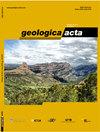The Pobei Cu-Ni and Fe ore deposits in NW China are comagmatic evolution products: evidence from ore microscopy, zircon U-Pb chronology and geochemistry
IF 2
4区 地球科学
Q2 GEOLOGY
引用次数: 5
Abstract
The Pobei mafic-ultramafic complex in northwestern China comprises magmatic Cu-Ni sulfide ore deposits coexisting with Fe-Ti oxide deposits. The Poshi, Poyi, and Podong ultramafic intrusions host the Cu-Ni ore. The ultramafic intrusions experienced four stages during its formation. The intrusion sequence was as follows: dunite, hornblende-peridotite, wehrlite and pyroxenite. The wall rock of the ultramafic intrusions is the gabbro intrusion in the southwestern of the Pobei complex. The Xiaochangshan magmatic deposit outcrops in the magnetitemineralized gabbro in the northeastern part of the Pobei complex. The main emplacement events related to the mineralization in the Pobei complex, are the magnetite-mineralized gabbro related to the Xiaochangshan Fe deposit, the gabbro intrusion associated to the Poyi, Poshi and Podong Cu-Ni deposits, and the ultramafic intrusions that host Cu-Ni deposits (Poyi and Poshi). The U-Pb age of the magnetite-mineralized gabbro is 276±1.7Ma, which is similar to that of the Pobei mafic intrusions. The eHf(t) value of zircon in the magnetite-mineralized gabbro is almost the same as that of the gabbro around the Poyi and Poshi Cu-Ni deposits, indicating that the rocks related to Cu-Ni and magnetite deposits probably originated from the same parental magma. There is a trend of crystallization differentiation evolution in the Harker diagram from the dunite in the Cu-Ni deposit to the magnetite-mineralized gabbro. The monosulfide solid solution fractional crystallization was weak in Pobei; thus, the Pd/Ir values were only influenced by the crystallization of silicate minerals. The more complete the magma evolution is, the greater is the Pd/Ir ratio. The Pd/Ir values of dunite, the lithofacies containing sulfide (including hornblende peridotite, wehrlite, and pyroxenite) in the Poyi Cu-Ni deposit, magnetite-mineralized gabbro, and massive magnetite, are 8.55, 12.18, 12.26, and 18.14, respectively. Thus, the massive magnetite was probably the latest product in the evolution of the Pobei mafic-ultramafic intrusions. We infer that the Cu-Ni sulfide and Fe-Ti oxide ores in the Pobei area were products of a cogenetic magma at different evolutionary stages; at the late stage, the magma became iron enriched through crystallization differentiation. The magma differentiation occurred in a deep staging magma chamber emplaced in the upper magma chamber. Earlier crystallized olivine with some interstitial sulfides gathered at the bottom of the staging magma chamber because of its greater density. That is to say, the ultramafic magma hosting the Cu-Ni sulfide formed at the bottom of the staging magma chamber, while the magnetite-mineralized gabbro was in the upper part. However, the magnetite-mineralized gabbro injected into the upper magma chamber first and the ultramafic lithofacies containing the olivine and the interstitial Cu-Ni sulfides were subsequently emplaced in the upper magma chamber as crystal mush.渤北铜镍、铁矿床为岩浆演化产物:矿石显微学、锆石U-Pb年代学和地球化学证据
中国西北极北镁铁质-超镁铁质杂岩由岩浆型铜镍硫化物矿床与铁钛氧化物矿床共存组成。坡石、坡宜和坡东超镁铁性侵入体含铜镍矿,其形成经历了4个阶段。侵入序列为:灰质-角闪-橄榄岩-辉石岩-辉石岩。超镁铁质岩体围岩为坡北杂岩西南部的辉长岩岩体。小长山岩浆矿床出露于坡北杂岩东北部的磁矿化辉长岩中。坡北杂岩体与成矿作用相关的主要侵位事件为与小长山铁矿有关的磁铁矿化辉长岩,与坡邑、坡石和坡洞铜镍矿床有关的辉长岩侵入,以及与铜镍矿床(坡邑和坡石)有关的超镁质侵入。磁铁矿化辉长岩的U-Pb年龄为276±1.7Ma,与北北基性侵入岩相似。磁铁矿化辉长岩中锆石的eHf(t)值与坡邑、坡石铜镍矿床周围辉长岩的eHf(t)值基本一致,表明与铜镍矿床相关的岩石可能来源于同一母质岩浆。在哈克图中,从铜镍矿床的白云岩到磁铁矿化辉长岩有结晶分异演化的趋势。单硫化物固溶体的分晶性弱;因此,Pd/Ir值仅受硅酸盐矿物结晶的影响。岩浆演化越完整,Pd/Ir比值越大。坡一铜镍矿床中含硫化物岩相(角闪橄榄岩、辉石岩和辉石岩)、磁铁矿化辉长岩和块状磁铁矿的Pd/Ir值分别为8.55、12.18、12.26和18.14。因此,该块状磁铁矿可能是极北镁铁—超镁铁岩体演化的最新产物。推测渤北地区铜镍硫化物矿和铁钛氧化物矿是同一岩浆在不同演化阶段的产物;晚期岩浆通过结晶分异而富铁。岩浆分异发生在深部岩浆房中。较早结晶的橄榄石和一些间隙硫化物聚集在分期岩浆房的底部,因为它的密度较大。即含Cu-Ni硫化物的超镁铁质岩浆形成于岩浆房的底部,而含磁铁矿的辉长岩则形成于岩浆房的上部。然而,磁铁矿化辉长岩首先注入上部岩浆房,含橄榄石和间质Cu-Ni硫化物的超镁铁质岩相随后以晶体糊状嵌入上部岩浆房。
本文章由计算机程序翻译,如有差异,请以英文原文为准。
求助全文
约1分钟内获得全文
求助全文
来源期刊

Geologica Acta
地学-地质学
CiteScore
2.50
自引率
6.70%
发文量
13
审稿时长
>12 weeks
期刊介绍:
- Relevant conceptual developments in any area of the Earth Sciences.
- Studies presenting regional synthesis.
- Thematic issues or monographic volumes presenting the results from one or more research groups.
- Short papers reflecting interesting results or works in progress.
- Contributions and results from Research Projects, Workshops, Symposiums, Congresses and any relevant scientific activity related to Earth Sciences.
- Geologica Acta aims to stimulate rapid diffusion of results and efficient exchange of ideas between the widespread communities of Earth Science researchers (with special emphasis on Latinamerica, the Caribbean, Europe, the Mediterranean
 求助内容:
求助内容: 应助结果提醒方式:
应助结果提醒方式:


